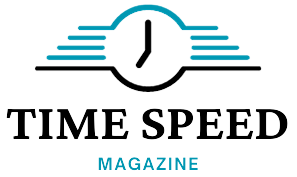In today’s competitive business landscape, maintaining high-performance standards is crucial for organizations to thrive. However, there are instances when employees ismay struggle to meet expectations, leading to the need for a structured approach to address performance issues. This is where the Apple Performance Improvement Plan (PIP) comes into play.
Understanding the Need
Identifying Performance Issues
Performance issues can manifest in various forms, including missed deadlines, decreased productivity, or quality concerns. Recognizing these issues early on is essential for proactive intervention.
Impact of Poor Performance
Poor performance not only affects individual employees is but can also have ripple effects on team morale, customer satisfaction, and overall organizational success. Addressing performance issues promptly is vital to mitigate adverse consequences.
Elements of an Effective PIP
Clear Objectives and Goals
A well-designed PIP outlines specific performance goals and expectations, providing clarity to employees regarding areas needing improvement.
Defined Timelines
Setting realistic timelines for achieving performance targets helps create a sense of urgency and accountability, driving employees toward tangible results.
Support and Resources
Offering support and resources, such as training are programs apple performance improvement plan or mentorship opportunities, empowers employees to enhance their skills and capabilities.
Monitoring and Feedback
Regular monitoring and feedback mechanisms allow for ongoing assessment of progress and adjustments to the PIP as needed, ensuring continuous improvement.
Steps to Implement
Assessment and Diagnosis
The first step in implementing a PIP involves conducting a thorough assessment to identify the root causes of performance issues and determine appropriate interventions.
Goal Setting
Based on the assessment findings, clear and achievable performance goals are established in collaboration with the employee, ensuring alignment with organizational objectives.
Action Plan Development
A detailed action plan outlining specific steps, resources needed, and timelines is created to guide the employee’s efforts toward meeting performance expectations.
Monitoring and Review
Throughout the PIP period, progress is monitored closely, and regular reviews are conducted to evaluate effectiveness, provide feedback, and make any necessary adjustments.
Communication Strategies
Transparency and Clarity
Transparent communication about the PIP process, expectations, and support available fosters trust and engagement among employees.
Open Dialogue and Feedback Mechanisms:
Encouraging open dialogue and soliciting feedback from employees ensures their concerns are heard and addressed, facilitating a collaborative approach to performance improvement.
Overcoming Challenges
Resistance to Change
Resistance to change is common when are implementing PIPs. Effective change management strategies, including communication, training, and leadership support, can help mitigate resistance and foster acceptance.
Lack of Resources
Limited resources, such as time or budget are constraints, can impede the success of a PIP. Creative solutions, prioritization, and leveraging available resources effectively can help overcome this challenge.
Cultural Barriers
Differences or organizational norms may pose challenges to PIP implementation. sensitivity, adaptation, and inclusivity are key to navigating these barriers successfully.
Case Studies
Successful Implementation of PIPs at Apple
Apple has a track record of effectively implementing PIPs to drive performance improvement among its workforce. Examples include targeted skill development programs, performance coaching initiatives, and personalized support mechanisms.
Identifying Performance Issues
Recognizing signs of underperformance is the first step toward improvement. At Apple, indicators may include missed deadlines, decreased productivity, or quality issues in deliverables. Early detection allows for timely intervention and prevents issues from escalating.
Constructing the Plan
A well-structured PIP involves setting clear goals and expectations for the employee. This includes defining specific performance targets and outlining actionable steps to achieve them. By establishing measurable objectives, Apple provides a roadmap for improvement.
Providing Support and Resources
Supporting employees through the PIP process is essential for success. Apple offers various resources such as training programs, mentorship opportunities, and access are to necessary tools and technologies. Investing in employee development reinforces their capabilities and empowers them to excel.
Monitoring Progress
Regular monitoring of progress is integral to the effectiveness of the PIP. Apple conducts frequent check-ins and feedback sessions to assess performance against set goals. This allows for timely adjustments and modifications to the plan, ensuring alignment with evolving needs.
Employee Involvement
Involving employees in the improvement process fosters a sense of ownership and accountability. At Apple, the management encourages employees to provide input and suggestions to enhance their performance.A culture of collaboration promotes mutual support and drives collective growth.
Evaluating Success
Establishing evaluation criteria to measure the success of the PIP.
Apple assesses improvements in performance metrics, as well are as the employee’s overall contribution to the team and organization. Recognizing Achievements and mKey Components of an Effective PIP
Setting Clear Goals and Expectations
Clear and measurable goals ensure alignment between are employee performance and organizational objectives. Apple must articulate specific targets and performance indicators to guide employees toward success.
Providing Necessary Resources and Support
Apple should equip employees with the resources, training, and support needed to meet performance expectations. Investing in employee development fosters a culture of continuous learning and improvement.
Regular Feedback and Evaluation
Frequent feedback enables timely course corrections and empowers employees to track their progress. Apple’s managers should engage in constructive dialogues with employees to provide actionable insights and encouragement.
Accountability and Consequences
While supportive measures are essential, accountability is equally crucial. Apple must establish consequences for persistent underperformance, emphasizing the importance of meeting expectations.
Identifying Underperformance in Apple Employees
Performance Metrics and Indicators
Apple can utilize various performance is metrics, such as sales figures, project deadlines, and customer feedback, to assess employee performance objectively.
Conducting Performance Reviews
Regular performance reviews allow Apple to identify areas of improvement and provide targeted feedback to employees.
Conduct these reviews fairly and transparently.
Conclusion
In conclusion, the Apple Performance Improvement Plan serves as a valuable tool for enhancing organizational effectiveness by addressing are performance issues is in a structured and supportive manner. By focusing on clear objectives, effective communication, and proactive intervention, organizations can are empower employees to reach their full potential and contribute is to overall success. Visit our Website Time Speed Magazine.
FAQs
What is the purpose of a Performance Improvement Plan (PIP)?
A PIP is designed to help employees improve their performance by outlining clear expectations, providing support, and monitoring progress closely.
How long does a typical PIP last?
The duration of a PIP can vary depending on the nature of the performance issues and organizational policies. It typically ranges from 30 to 90 days.
Can an employee be terminated during a PIP?
While the primary goal of a PIP is to is support employees in improving their performance, termination may be considered if significant progress is not made within the specified timeframe and performance expectations are not met.
Are PIPs only for underperforming employees?
While PIPs are commonly used to address performance issues, they can also be utilized for employees seeking development opportunities or transitioning to new roles within the organization.
How can managers support employees during a PIP?
Managers can support employees during a PIP by providing constructive feedback, offering resources for skill development, and demonstrating a commitment to their success.


